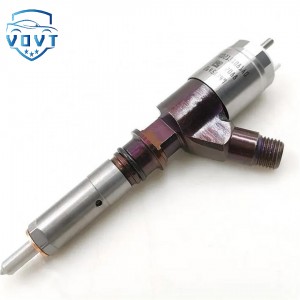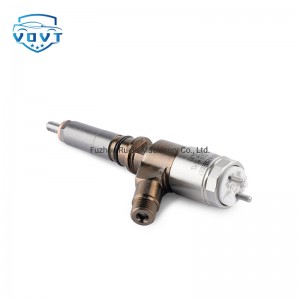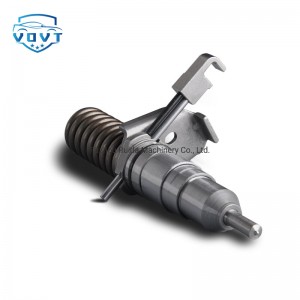New High Quality Diesel Injector 4P-9075 0R-3051 4P-9076 0R-2921 4P-9077 0R-2925 For CAT 3500A
Products Description
| Reference. Codes | 3500A |
| Application | 3500A |
| MOQ | 4PCS |
| Certification | ISO9001 |
| Place of Origin | China |
| Packaging | Neutral packing |
| Quality Control | 100% tested before shipment |
| Lead time | 7~10 working days |
| Payment | T/T, L/C, Paypal, Western Union, MoneyGram or as your requirement |
What methods can be used to reduce the impact of environmental conditions on injector flow characteristics?
Methods for dealing with temperature effects
Fuel heating or cooling system: In order to solve the problem of increased fuel viscosity in low temperature environment, a fuel heating system can be installed, such as setting a heating wire in the fuel pipeline or using a heat exchanger, using the heat of the engine coolant to preheat the fuel, so that the fuel maintains a suitable temperature, reduces viscosity, and ensures its fluidity, thereby stabilizing the flow characteristics of the injector. For high temperature environments, a fuel cooling system can be used to prevent excessive evaporation of the fuel to form cavitation. For example, some high-performance engines are equipped with a special fuel cooler to control the fuel temperature by adjusting the flow of the cooling medium.
Injector temperature compensation control: The engine control unit (ECU) can adjust the drive parameters of the injector in real time according to the signals of the ambient temperature sensor and the injector temperature sensor. At low temperatures, the injection pulse width or the drive voltage is appropriately increased to compensate for the decrease in flow caused by the increase in fuel viscosity; at high temperatures, the injection pulse width or the drive voltage is correspondingly reduced to prevent excessive injection due to reduced fuel density. This temperature compensation control algorithm can be determined through a large number of experiments and data fitting to achieve precise control of the injector flow at different temperatures.
How to deal with the impact of altitude
Altitude sensor and ECU linkage: Install altitude sensor to monitor the change of atmospheric pressure in real time, so as to indirectly obtain altitude information. ECU adjusts the injection pressure and injection pulse width of the injector according to the signal of altitude sensor. As the altitude increases, the atmospheric pressure decreases, and the ECU automatically reduces the injection pressure of the injector and reduces the injection pulse width accordingly to adapt to the reduction of intake volume, maintain a suitable air-fuel ratio, and ensure that the performance and emissions of the engine are not affected by the altitude.
Variable pressure injection system: The variable pressure injection system is used to automatically adjust the pressure of the fuel injection system according to the changes in altitude and engine operating conditions. In high altitude areas, the fuel injection pressure is reduced to avoid excessive fuel atomization and incomplete combustion due to excessive injection pressure; in low altitude areas, the injection pressure is increased to ensure good atomization and full combustion of the fuel. This system usually consists of an electronically controlled pressure regulating valve and a high-pressure oil pump, which can accurately adjust the injection pressure according to the instructions of the ECU, effectively reducing the impact of altitude on the flow characteristics of the injector.
Optimization of injector design
Improved nozzle design: adopt special nozzle shape and internal flow channel design to reduce the flow resistance and energy loss of fuel during injection and improve the flow coefficient of the injector. For example, streamlined nozzle inlet and outlet are adopted to avoid sharp corners and sudden flow channel structure, so that the fuel can pass through the nozzle more smoothly and reduce the flow fluctuation caused by changes in environmental conditions. In addition, the diameter and number of nozzles are optimized to ensure the atomization effect of fuel so that the injector can have good flow characteristics under different environmental conditions.
Select suitable materials: Considering the influence of ambient temperature and fuel characteristics, materials with good wear resistance, corrosion resistance and thermal stability are selected to manufacture the key components of the injector. For example, ceramic or special alloy materials are used to manufacture the injector nozzle. These materials have low thermal expansion coefficient and high hardness, can maintain stable size and shape under different temperature and pressure conditions, and reduce the change of injector flow characteristics caused by material deformation or wear. At the same time, the corrosion resistance of the material can prevent impurities and additives in the fuel from damaging the internal structure of the injector and ensure its normal operation.























